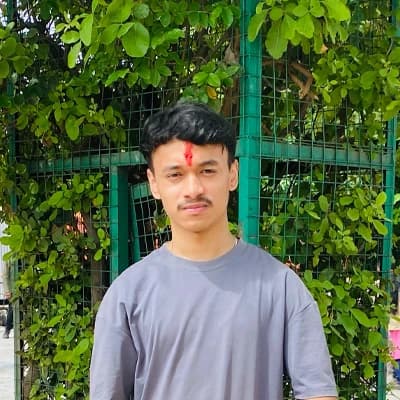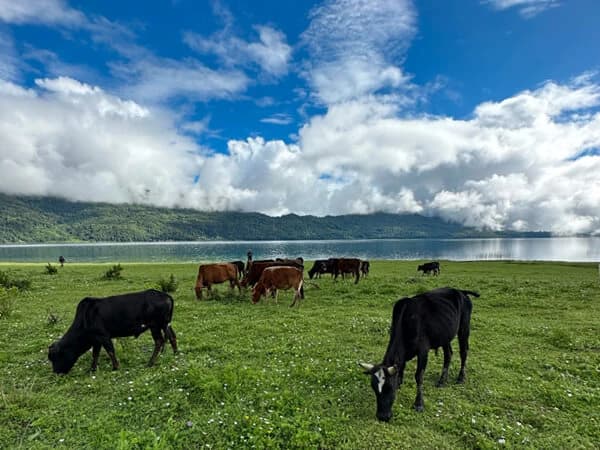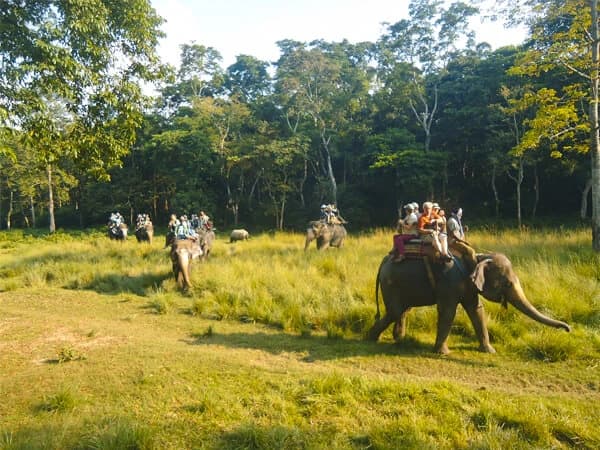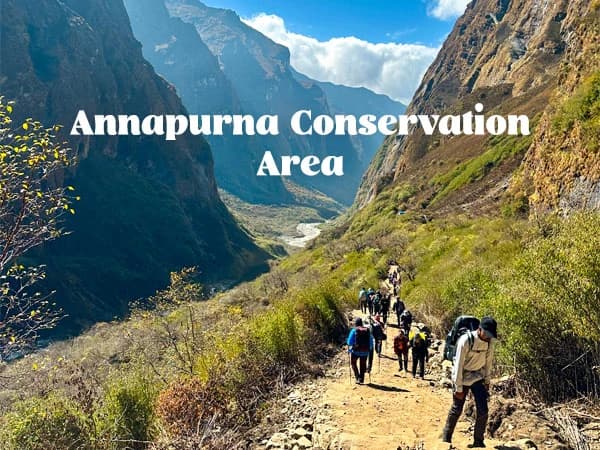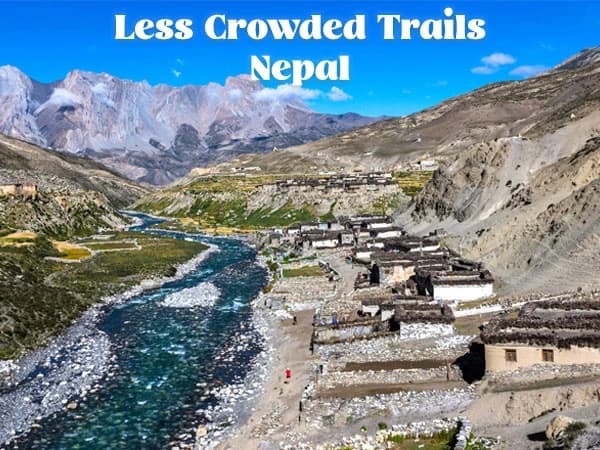Jumla is not a mere stop-over — it is a hub for culture and wilderness trekking in Nepal's far west. It boasts the renowned Sinja Valley, apple orchards, and trails to Rara, giving tourists a total experience of the Himalayas.
Jumla: Apple Orchards, Ancient Valleys & Trails to Rara
Introduction
Jumla, tucked away deep within far-west Nepal, is where tradition meets wilderness. Most mass tourists pass by, but it is a developing destination for those who want more: authentic Himalayan culture, unspoilt landscape, and fabled trekking routes.
Located within the Karnali Province at about 2,300 meters, Jumla is the entryway to the world's most untouched high-altitude lake, namely Rara Lake. It is not a stopping place on the itinerary to Rara—it is the geographical heart of the Karnali area as well as its cultural hub.
👉 Explore the Rara Lake and Bardiya Wildlife Safari Tour
Where is Jumla? Geography & Landscape
Jumla is situated in the mid-western hills of Nepal, nestled amongst high mountains, river valleys, and hills covered with greenery. The Tila and Sinja Valleys of the region are river valleys between high ridges.
It is situated at a height of some 2,300 meters from sea level, thus colder than the plains in the south of the Terai but more accessible than the high Himalayan passes. The terrain appears much different in many respects—green terraces rise steeply to snowy peaks.
Tila River is an important small river in the Karnali Region. It runs through the district and irrigates barley, buckwheat, and apple trees. Wildflowers bloom beside the river during spring.
The mountains glimmer gold during autumn under brilliant blue skies. Jumla's rugged charm remains etched on your memory, whether you arrive here on a trekking holiday or pass through the area on a chance visit.

Cultural Heritage of Jumla
Jumla is a centuries' old heritage culture. The district's population comprises a mix of ethnic communities that are mainly Khas Arya communities, Thakuri, Chhetri, and Dalits. The communities are bound by a shared linguistic foundation of ancient Khas Kura, out of which modern Nepali was later developed.
Traditional attire is worn by individuals, especially for festivities. Dashain, Tihar, and Saune Sankranti are celebrated fervently in this area. Chyacha is a local festival celebrated during summer months at the Sinja Valley, depicting the affluent culture of Jumla. Locals dance and sing local songs, said to purify the soil and guarantee good harvests.
Jumla's culture is reflected in its architecture—wooden roofs on stone houses, wind-tossed prayer flags, shared temples that are both for worship and for societal activities. You do not visit Jumla, you experience a pulsating history.

Jumla as a Gateway to Rara Lake
Perhaps the most popular reason for passing through Jumla is to trek to Nepal's greatest, if not most beautiful, lake at 2,990 meters, Lake Rara. The trek from Jumla to Rara is a beautiful, lesser-trekked experience through forest, high passes, and Buddhist villages. It's a less touristy yet no less fulfilling option compared to trails to Annapurna and Everest.
Rara Lake Trek Itinerary Overview (via Jumla)
- Day 1: Jumla to Gothijyula
- Day 2: Trek to Naurighat
- Day 3: Trek to Chautha
- Day 4: Trek to Dhotu
- Day 5: Reach Rara Lake
- Day 6–7: Exploration and return via same or alternate route
The trail climbs steadily through pines, over suspension bridges, and through villages like Chautha and Jhyari, giving trekkers a daily taste of mountain life. The vista is more breathtaking as the air gets cooler with each step. It is a 5–7 day trek from Jumla to reach Rara, depending on speed and acclimatization.

Jumla and the Apple Belt of Nepal
Jumla has earned the title of "Apple Belt of Nepal," and for a good reason. The altitude and chill of the area make it perfect for apple cultivation. Chandan Nath, Patmara, and Dillichaur villages are renowned for their large orchards full of pink-white blossoms during spring and full of fruits by the end of summer.
Apple farming is among the major contributors to Jumla's economy. The growers use organic and native farming methods to grow the Marpha apple as well as local varieties of apple. The apples are exported throughout Nepal, even being included in juices, wines, as well as dried fruit treats.
Season for Apples
- Blooming: May to June
- Harvest: Late August - October
Harvest season brings Jumla to life. The local markets are full of traders, and the pathways are filled with porters carrying crates of apples. If you do manage to visit during this time, you will be welcomed with fresh apples or even a sip of homemade apple wine—a specialty created by the locals.
Sinja Valley – Where Nepali Language Was Born
West of Jumla is Sinja Valley, a place of vast historical importance. It was the medieval capital of the medieval kingdom of the medieval Khasas, who at their greatest extent controlled west Nepal and into Tibet. It was here that their earliest forms of the Nepali language—what is referred to as Khas Bhasa—were developed.
The valley has prehistoric rock inscriptions, ruins of a palace, and temple complexes that are believed to have been constructed in the 12th century. Sinja was short-listed by UNESCO as a candidate for inclusion on the tentative list due to its linguistic values and archaeology values.
While walking through Sinja village, you will notice remnants of stone gates, ancient courtyards, and water systems that speak volumes of sophisticated planning. For culture lovers and history buffs, it is a unique experience to walk through a living museum of Nepali identity.

Trekking from Jumla
Jumla is the perfect center for many of Nepal's most remote treks, with routes as beautiful as they are culturally enriching.
-
Jumla – Rara Lake
Travel duration: 7-10 days
Difficulty: Moderate
Highlights: Villages, forest, Rara Lake, off-grid experience
-
Jumla–Dolphu (Upper Mugu) Trek
Duration: 15–20 days
Difficulty: Hard
Highlights: Buddhist culture, remote villages of Mugu, rugged terrain
These treks are best done in spring (March–May) or autumn (September–November). You will frequently have entire landscapes to yourself—just you, your boots, and the mountains—and the paths are less crowded.
Trekking in Karnali is not so much about scenery. It is about being immersed completely. You stay overnight at tea houses or local people's homes, eat local food, rise at dawn to the sound of wind and river.
How to Reach Jumla – Flights, Roads, and Travel Tips
The Jumla trip is unique—it is what sets this destination apart from all the rest. Since it is remote in the Karnali Province, you must prepare well beforehand, be flexible, and patient to reach there. But if you work for it, the payoff is well worth it: expansive views of the Himalayas, unspoiled nature, and actual village life.
-
By Air – The Quickest Option, but Weather Dependent
There is a local airport within Chandannath Municipality of Jumla, at an altitude of about 2,300 meters. The most convenient mode of travel is by airplane, particularly if you do not have much time at your disposal.
-
From Nepalgunj
Flight duration: About 30–40 minutes
Airlines: Tara Air, Sita Air, and Summit Air operate on this route at times.
Tip: Flights tend to get canceled or delayed owing to adverse mountain weather conditions. Purchase flexible tickets with extra days.
-
From Surkhet
Duration: Approximately 25 to 30 minutes.
Frequency: Surkhet flights do not operate daily and must normally be booked in advance with local airlines.
Ideal for: Those already in Karnali Province or those who cannot obtain tickets from Nepalgunj.
-
-
By Road – A True Off-the-Beaten-Path Journey
Traveling by road to Jumla is not easy but a thrilling experience for adventure-loving individuals.
-
Path:
Begin at Surkhet and travel along the Karnali Highway to Jumla. This road is renowned for being among Nepal's toughest roads—it is winding, narrow, and frequently unpaved.
-
Time And Duration:
Distance: Around 300 kilometers
Travel duration: 18–20 hours by jeep (more during the rainy season/winter).
-
Car Options:
There are morning buses and minibuses from Surkhet or Nepalgunj. They can fit small groups or backpackers who prefer a bit more comfort.
-
Road Conditions:
Expect bumpy roads, pointed mountains, and low valleys. Landslides and roadblocks happen during monsoon months (June to September), so do expect that too.
-
Travel Tips for First-Timers to Jumla
-
Pack Smart:
You will need to pack light, rain gear, and warm gear for chilly nights. The climate is known to shift overnight in Jumla.
-
Cash is Everything:
Bring enough Nepali rupees, as ATMs are not readily available and may not always function. In rural communities, credit card use is rare/are not used at all.
-
Prepare for Delays:
There will most probably be delays either by air or by road. Always keep a flexible itinerary with buffer days.
-
Health & Safety:
Jumla is at high altitude. Acclimatize gradually, keep yourself well-hydrated, and carry general medicine for altitude sickness or upset stomach.
-
Flight Status:
Reconfirm flights at least 24 hours in advance. Check with local airline offices in Nepalgunj or Kathmandu for details.
The trip to Jumla is a picturesque one in and of itself, despite the practical difficulties. Either by air over the Himalayas or by road on serpentine mountain highways, you go through dense forest, deep river gorges, and timeless villages—an introduction to Nepalese countryside itself.
Best Time to Visit Jumla
Jumla has something to offer every season, but the best time depends on your interests.
| Season | Highlights |
|---|---|
| Spring | Apple blossoms, clear skies, trekking |
| Summer | Green landscapes, occasional monsoon |
| Autumn | Harvest festivals, best trekking weather |
| Winter | Snowy views, cold but peaceful |
The best time for trekking is Autumn (Sept to Nov), and for culture tours and easy treks, it is Spring (Mar to May). Monsoon (June to Aug) has green scenery but hazardous routes, and Winter (Dec to Feb) is beautiful but extremely harsh at high altitudes.
Accommodations and Local Hospitality in Jumla
Despite being located in one of the most remote areas of Nepal, Jumla is a friendly locale with simple but unforgettable facilities. The hospitality is local, traditional, and heartwarming. Whether you're trekking to Rara Lake or immersing yourself in Jumla's rich culture, you will be warmly welcomed by people proud of their heritage.
Where to Stay in Jumla
Accommodation in Jumla is improving, though still basic compared to more developed tourist destinations. Here's what you can expect:
-
Teahouses:
The most common type of accommodation on trekking trails. Teahouses offer simple rooms with twin beds, shared bathrooms, and local cuisine. They are usually family-owned, giving you a glimpse into rural Karnali society.
-
Community Lodges:
These eco-tourism projects are located in villages along popular trekking routes. Your stay directly benefits the local community. Expect simple bedding, local decorations, and homemade meals.
-
Homestay:
Staying with a local family is one of the best ways to experience Jumla's culture firsthand. You'll be treated as a family member and may even be invited to participate in seasonal farming or celebrations.
-
Hotel Kanjirowa – Jumla's Renowned Hotel:
Located centrally near Jumla Bazaar, Hotel Kanjirowa offers superior service for those seeking comfort and privacy. It features individual rooms with private bathrooms, electricity, and hot meals. It is best suited for trekkers, researchers, government officials, and foreigners who need a safe base before traveling to Sinja Valley or Rara.
Note: Call ahead or book through local contacts as the hotel is not listed on online reservation sites.
Regional Delicacies – Traditional and Wholesome
Eating in Jumla is a delightful experience of Himalayan cuisine, influenced by the altitude, culture, and local harvests like buckwheat, barley, millet, and apples. Some must-try dishes include:
-
Dhido:
A local dish made from buckwheat or millet flour, served with homemade pickles and gundruk soup (fermented green leaves). It's a warm, healthy, and popular choice among locals.
-
Buckwheat Roti or Bar:
Stone-ground flatbreads that make great breakfast dishes or side dishes for lentil soup.
-
Domestic Apple Products:
Being part of Nepal's apple belt, Jumla offers delicious apple-based treats, such as:
- Apple Wine: A low-alcoholic drink made from locally grown apples.
- Sechtes: Dried apple wedges, perfect for a hike.
- Apple Jam: Typically served with roti or bread in homestays.
-
Herbal Teas & Chukku:
Herbal teas are common in Jumla, especially during winter. Chukku (tea made from dried ginger) is particularly popular for its warming properties.
The Virtue of the People
Jumla is special, not for its luxury, but for the true goodness of its people. The warm and friendly residents belong to various ethnic groups, including the Thakuri, Dalit, Khas Arya, and others. In even the most remote communities, visitors are greeted with a cup of tea, a smile, and an open door.
During festivals like Saune Sankranti or Dashain at Chyacha, guests may be invited to participate in local celebrations. You’ll experience local cuisine, traditional dances, and rituals that have been passed down for generations.
Comfort in Jumla isn’t about luxury; it’s about authenticity. Whether you’re staying in a simple homestay, chatting with locals around a campfire, or tasting homemade apple wine, you’ll return home with unforgettable memories. It’s the realness of the experience that makes your trip to Jumla something extraordinary and lasting.
Why Jumla Should Be on Your Radar
Jumla stands out because it’s not only a beautiful destination in Nepal—a country famous for its stunning trails and towering peaks—but also a place that holds a rich historical and cultural significance. This is where ancient languages originated, and where apple orchards grow naturally. Jumla also offers access to untouched areas like Sinja Valley and Rara Lake.
If you’re tired of the usual tourist spots and crave something that blends nature, history, and culture, Jumla should be on your radar. It’s not just a destination for viewing Rara Lake, but an opportunity to experience the very heart of Nepal.


